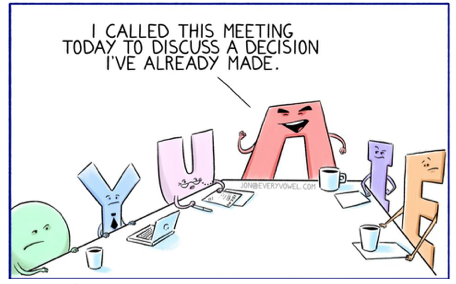CommentsWHY THE RESISTANCE GROWS--“It was so pitiful — city planners asked us for our 'feelings.' They rushed past open space so fast I was embarrassed,” observed Patricia Bell Hearst, chair emeritus of Hillside Federation.
“The planners were so off-topic I didn't know what the hell was going on” added Westwood Neighborhood Council Vice-President Sandy Brown.
Following a topsy-turvy run of empty ritual masquerading as community outreach, remarks like Sandy’s and Patricia’s were not uncommon.
The evening in a Westwood church was part of LA city planners’ go at inclusive community engagement, a statutory requirement (that means a State Law) when a city updates its General Plan.
Within that General Plan — think of the Plan as a powerful roadmap for how LA improves even as it grows — is a thing called the Open Space Element, and it is currently being updated. The last time the Open Space Element for Los Angeles was updated was during the Vietnam War.
Under California law, the Open Space Element must 1) protect natural habitat for animals & plants; 2) provide recreational open space; 3) create an open space public safety plan for watersheds and hazard zones like earthquake faults; and 4) preserve Native American sites.
On October 2, following several months of non-transparent, exclusory sessions on the Open Space Element, city officials finally opened the meetings to community leaders, residents, and stakeholders at the first of 4 scheduled public meetings.
Hoping for that sense of “ownership in this process” promised to them by Mayor Eric Garcetti, the Westside was ready to embrace a partnership with city officials on the future of Open Space.
It didn’t happen. There was no outreach by City Planning, no ads to alert the public to this crucial chance to weigh in — and in the end, there was no hearing.
Planners instead set up 5 circles for folks to chat in “faux-breakouts.” No one could hear what the other tables were saying. Chats were repeatedly steered by city planners into “culture and community, public art, and museums” despite attendees’ efforts to discuss creating open space and planning for earthquake zones.
Following the faux-breakouts, planners did not reconvene the room to re-cap highlights or to identify next steps, which — as any organizer will tell you — is the entire point of an effective breakout. Hence, faux-breakouts.
On October 7, at the second such Open Space hearing, this time in the San Fernando Valley, people who attended overwhelmingly requested the meeting’s format be changed to a simple Q & A. The plurality of questions in an open forum setting, they argued, would clearly advance everyone's knowledge about the challenges to Open Space in LA, in the allotted 120 minutes.
Their pleas went ignored by the city planners who ran the show.
The truth is we were sensing what author Sherry Arnstein described as Empty Ritual. According to her theory, there are degrees of citizen participation and non-participation.
Using that model, our first two Open Space meetings were what is known as Informing: vehicles for one-way communication by simple device of providing superficial information, discouraging questions; and Consultation: where residents may indeed be seen and heard, but aren't given the power to ensure their views will be heeded by power-holders.
Sherry Arnstein was a public policy analyst who, while working at the U.S. Department of Housing, Education, and Welfare, developed a plan to desegregate hospitals nationwide. Arnstein trained racially integrated teams and led them into Jim Crow states and throughout the country to test compliance techniques.
Later, as chief adviser on citizen participation and federal urban aid during the Johnson Administration, Arnstein developed her now-famous Ladder of Citizen Participation.
The third of these Open Space Element meetings was a display of incompetence at best, political maneuvering at worst. Scheduled for October 21 at the same time as Taste of Soul, otherwise known as Los Angeles’ largest street festival, South L.A. mothers shut down the third City Planning hearing on Open Space, demanding a proper meeting on a reasonable day with proper notice to the community. To date, the South LA meeting has not been re-scheduled.
On Arnstein's ladder, this revolt by everyday residents of LA might best be described as an "action seeking to engage" with city officials on what Arnstein called the Partnership rung: here, power is in fact redistributed through negotiation between citizens and power-holders. But again, to date, no makeup hearing has been scheduled.
On October 25, the Hollywood community, aware of what unfolded in the Valley, South LA and Westside meetings, and armed with live-streaming activists, managed to get the town hall hearing they were asking for. Strong opposition to counting concrete stairways as Open Space was brought up by multiple residents at the previous meetings, yet in Hollywood on Oct 25, concrete stairways were still being presented by city officials as Open Space. On Arnstein's ladder, this was mere Consultation: A public hearing where participants have participated in a participation, and Placation: where citizens may realize that they have once again extensively “participated” but have not profited beyond the extent the power-holders decide to placate them.
This is the corrosive art of empty ritual.
“A human being,” Einstein once said, “experiences himself, his thoughts, and feelings as something separated from the rest—a kind of optical delusion of his consciousness. This delusion is a kind of prison for us, restricting us to our personal desires and to affection for a few persons nearest to us.”
Next up: Placation and consultation reign in the Boyle Heights Community Plan
(Jorge Castañeda holds an MFA from California Institute of the Arts, and in addition to working as an organizer for years, he is producing a documentary film about homelessness in Los Angeles.)
-cw
















